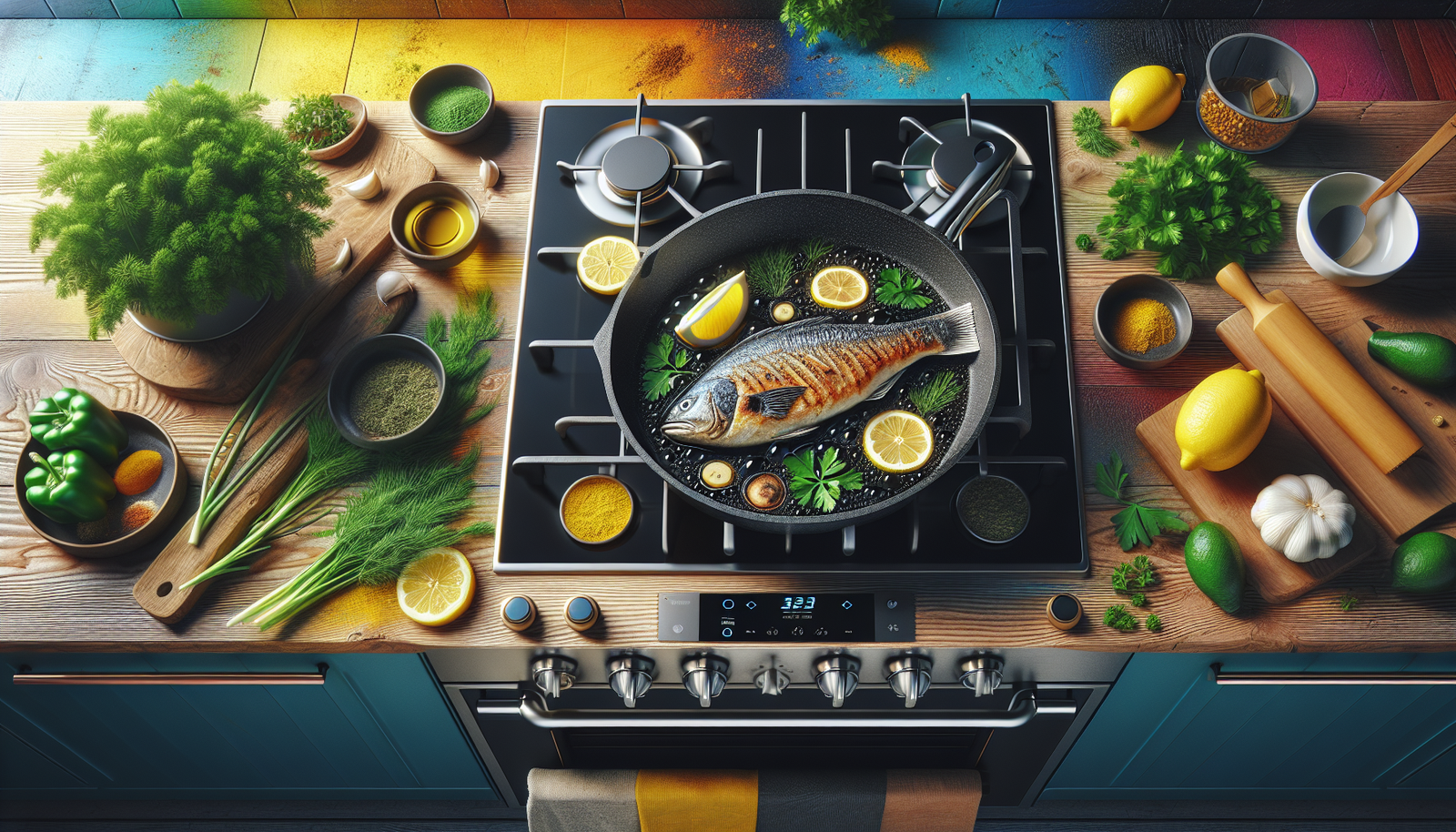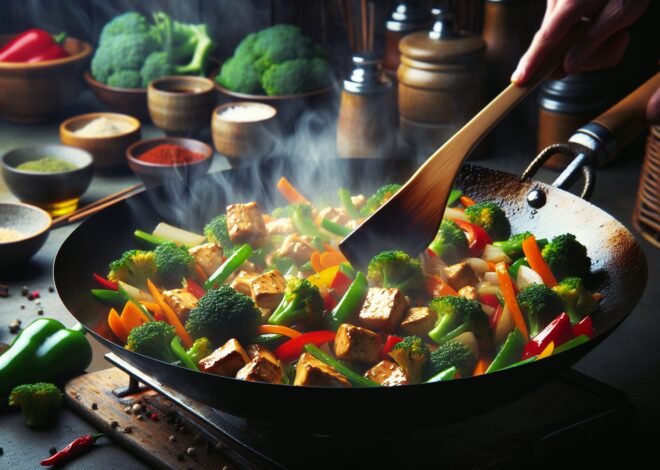
How to Cook Fish on a Skillet for Quick and Easy Meals
Cook fish on a skillet to achieve a delicious and quick meal in under 20 minutes. Skillet-cooking offers the efficiency and flavor that busy home chefs crave. This guide will explore essential techniques for perfectly searing your fish, ensuring a crispy crust while maintaining tender, flaky insides. Discover the secret to enhancing flavors using simple ingredients and the best fish types for skillet cooking. Elevate your culinary skills and enjoy hassle-free meals that don’t compromise on taste or quality. Continue reading to transform your regular dinners into mouth-watering, savory delights.
Best Fish Types for Skillet Cooking
Cooking fish on a skillet is an art. The right type of fish makes all the difference. Let’s dive into the best fish varieties perfect for skillet cooking. Each offers a unique taste and texture, making your meals a culinary delight. Whether you crave something light or rich, there’s a fish type tailored for your skillet.
Top Fish Varieties to Cook on a Skillet
Choosing the right fish for skillet cooking enhances the overall dish. Here are some top contenders:
- Salmon: Known for its rich flavor and high omega-3 content. Its firm texture holds well on a skillet.
- Tilapia: A mild, slightly sweet fish that’s perfect for beginners. It cooks quickly and pairs well with various seasonings.
- Trout: Offers a delicate taste with a hint of nuttiness. Its thin fillets make for quick cooking.
- Tuna: Ideal for those who love a steak-like texture. Best seared on high heat to lock in flavor.
These varieties provide a range of flavors and textures that are ideal for skillet cooking. Each brings its unique character to the dish, enriching your culinary experience.
Tastiest Options for Pan-Frying Fish
For those who prefer their fish pan-fried, certain types stand out:
- Cod: Flaky and mild, cod absorbs flavors wonderfully. It’s a versatile choice for various sauces.
- Halibut: Firm and meaty, with a subtle sweetness. It doesn’t fall apart easily, making it a pan-frying favorite.
- Sea Bass: Offers a buttery texture with a rich, delicate flavor. Its skin crisps beautifully on a skillet.
- Mahi-Mahi: Lean yet firm, perfect for searing with spices. Its unique taste sets it apart.
These fish are perfect for pan-frying, offering mouthwatering flavors and textures. They’re great for quick meals that don’t compromise on taste.
Selecting Fresh Fish for Skillet Meals
The freshness of fish greatly impacts the taste of your dish. Here’s how to select the freshest catch:
- Appearance: Look for shiny skin and clear eyes. Dull eyes or discolored skin indicate less freshness.
- Smell: Fresh fish should have a mild, ocean-like aroma. A strong, fishy smell is a red flag.
- Touch: The flesh should be firm and bounce back when pressed. Soft or mushy flesh means it’s past its prime.
- Gills: They should be bright red, not gray or brown. This is a sign of freshness and quality.
By selecting fresh fish, you ensure a delicious and satisfying skillet meal every time.
Step-by-Step Guide to Cooking Fish on a Skillet
Transforming raw fish into a delectable meal involves some key steps. This guide will walk you through preparing fish for skillet-cooked perfection. With the right techniques, tools, and ingredients, skillet cooking becomes a simple and rewarding process. Let’s explore how to achieve that perfect skillet-cooked fish.
Preparing Fish for Skillet Cooking
Preparation is crucial for skillet cooking. Follow these steps for best results:
- Clean the Fish: Rinse under cold water and pat dry using paper towels. Moisture affects the cooking process.
- Remove Bones: Use tweezers to extract small bones. Boneless fillets ensure an enjoyable eating experience.
- Skin On or Off: Decide if you want to keep the skin. Skin-on provides a crispy texture, while skinless offers a smoother bite.
- Cut Evenly: Slice the fish into even portions. This ensures uniform cooking and flavor distribution.
Proper preparation ensures your fish cooks evenly and tastes delicious.
Essential Ingredients and Tools Needed
Having the right tools and ingredients simplifies skillet cooking. Here’s what you need:
Ingredients:
- Fresh fish fillets
- Olive oil or butter for frying
- Salt and pepper for seasoning
- Lemon or lime wedges for garnish
Tools:
- Non-stick skillet or cast-iron pan
- Fish spatula for easy flipping
- Tweezers for bone removal
- Paper towels for patting dry
These essentials help you create a flawless fish dish. Investing in quality tools and ingredients enhances your cooking experience.
Techniques for Perfect Skillet-Cooked Fish
Mastering a few techniques ensures your fish is perfectly cooked:
- Preheat the Skillet: Heat the pan for a few minutes before adding oil. This prevents sticking and promotes even cooking.
- Use Enough Oil: Coat the pan lightly to prevent the fish from sticking. Too much oil can make it greasy.
- Cook on Medium Heat: High heat can burn the outside while leaving the inside raw. Medium heat cooks evenly.
- Monitor Cooking Time: Fish cooks quickly. A few minutes per side is usually sufficient, depending on thickness.
- Let it Rest: Allow the fish to rest for a minute after cooking. This helps retain moisture and flavor.
These techniques ensure your fish is cooked to perfection every time, with a perfect balance of flavor and texture.
Tips for Flavorful and Healthy Skillet Fish Dishes
Skillet cooking doesn’t just make fish taste great; it also keeps it healthy. With a few tricks, you can enhance the flavor while maintaining nutritional benefits. Let’s delve into seasoning, pairing, and what makes skillet fish dishes a healthy choice. These tips will make your next meal both delicious and nourishing.
Seasoning Suggestions for Skillet Fish
Seasoning enhances the natural flavor of fish. Consider these options:
- Herbs: Dill, parsley, and thyme add freshness. Use fresh herbs for a more vibrant flavor.
- Spices: Paprika, cumin, and coriander bring warmth. Spice blends can offer convenient flavor boosts.
- Citrus: Lemon or lime juice brightens taste. Zest adds an extra citrusy kick without the acidity.
- Garlic and Ginger: Adds depth and aroma. These work well together for Asian-inspired dishes.
Experimenting with these seasonings can elevate your skillet fish dishes, making them flavorful and exciting.
Pairing Skillet-Cooked Fish with Side Dishes
A well-paired side dish complements your fish, creating a balanced meal. Some great pairings include:
- Vegetables: Roasted asparagus or steamed broccoli. Their earthiness pairs well with delicate fish flavors.
- Grains: Quinoa or brown rice for a hearty base. These provide texture and soak up any sauces.
- Salads: A fresh green salad with vinaigrette. Light and refreshing, it balances the richness of the fish.
- Potatoes: Mashed or roasted potatoes. Their creamy texture is a comforting contrast.
These sides enhance your fish dish, making it a well-rounded and satisfying meal.
Health Benefits of Cooking Fish in a Skillet
Skillet cooking offers numerous health benefits. Here are a few key advantages:
- Retains Nutrients: Quick cooking preserves vitamins. Fish retains its natural omega-3s and essential nutrients.
- Less Oil Needed: Skillet cooking requires minimal oil. This reduces calorie intake without losing flavor.
- Promotes Heart Health: Regular consumption of fish supports cardiovascular health. It’s a delicious way to incorporate healthy fats.
- Easy to Digest: Light cooking makes fish easier to digest. This prevents heaviness, making it a great choice for any meal.
These health benefits make skillet-cooked fish an excellent addition to a balanced diet. Enjoy flavorful meals while taking care of your health.
Conclusion
Cooking fish on a skillet is a straightforward and quick method. Begin by selecting fresh fish fillets to ensure the best flavor. Season the fish with salt, pepper, and any desired herbs or spices. Preheat the skillet with oil over medium-high heat before adding the fillets. Cook the fish for a few minutes on each side until it’s golden brown and flakes easily with a fork.
FAQ
How do I cook fish on a skillet without sticking?
To prevent fish from sticking, ensure the skillet is preheated over medium-high heat. Pat the fish dry with a paper towel and season it. Use a high smoke point oil and wait until it shimmers before adding the fish. Do not move the fish too soon; allow it to naturally release when it’s ready to flip.
What is the best oil to use when frying fish on a skillet?
Use oils with high smoke points such as canola, grapeseed, or peanut oil. These oils withstand high temperatures, preventing the fish from absorbing too much oil and maintaining its flavor.
How long should I cook fish in a skillet for perfect doneness?
Cook fish for about 3-4 minutes per side, depending on the thickness. Thicker fillets require more time, while thinner ones need less. Aim for an internal temperature of 145°F for perfectly cooked fish.
What type of fish is ideal for cooking in a skillet?
Firm, white fish like cod, haddock, or tilapia are ideal for skillet cooking. These fish hold up well to frying and develop a nice crust. Salmon and trout also work well due to their rich flavor.
Can you give tips for seasoning fish before skillet cooking?
Season fish with salt and pepper at least 15 minutes before cooking to enhance flavor. Add herbs like dill or thyme for extra freshness. Lemon zest or a dash of smoked paprika can add depth and complexity.
How can I tell if my skillet-cooked fish is done?
Check for doneness by gently pressing the fish with a fork. It should flake easily and have a translucent appearance at the center. Use a meat thermometer to ensure it reaches 145°F for safe consumption.











